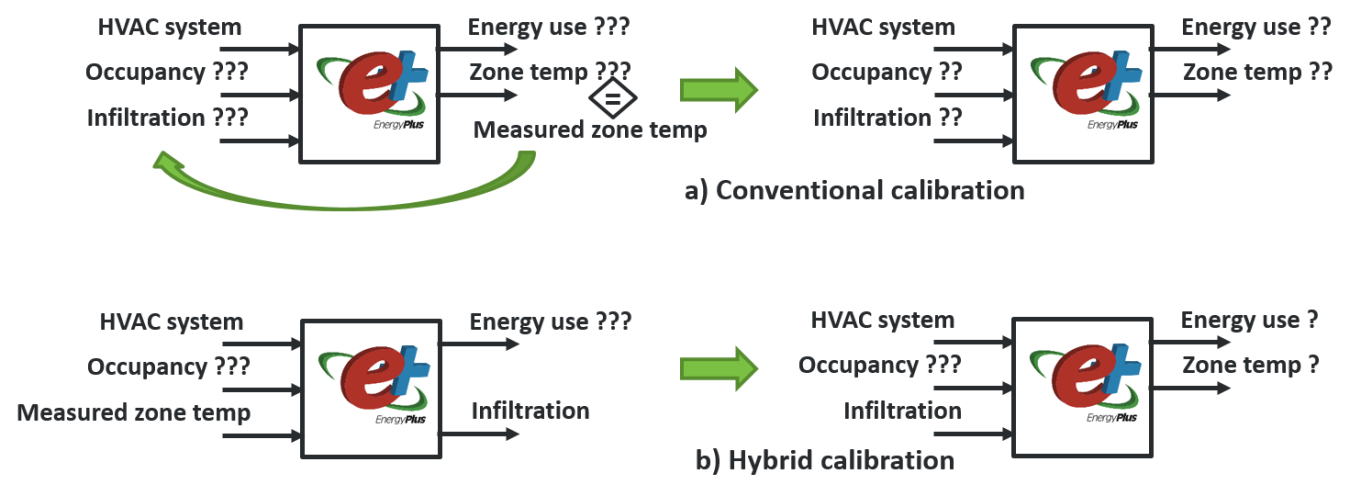LBNL researchers are developing inverse modeling algorithms to recover infiltration rates and internal thermal mass from zone temperature streams.
October 7, 2014Lead Performer: Lawrence Berkeley National Lab – Berkeley, CA
DOE Funding: $600,000
Cost Share: $67,000 (California Energy Commission)
Project Term: October 1, 2014 - September 30, 2016
Funding Opportunity: Building Energy Efficiency Frontiers and Incubator Technologies (BENEFIT) - 2014 (DE-FOA-0001027)
Related Projects: EnergyPlus
PROJECT OBJECTIVE
Modeling the energy consumption of existing buildings can be challenging due to the fact that some model inputs that have a significant impact on simulation results are difficult to obtain. Important, difficult-to-obtain parameters include actual occupancy, lighting and plug load schedules, infiltration rate, internal thermal mass (i.e. thermal mass of the contents in the building), real envelope thermal properties (i.e. installed and potentially degraded), and real equipment efficiencies (i.e. installed and potentially degraded). Some of these can be derived using sensor or submeter data, but two in particular cannot, namely the infiltration rate and internal thermal mass — it is seemingly impractical to meter or sense furniture and books or individual cracks in the building envelope.
This project seeks to overcome this measurement challenge by providing a new calculation pathway, which will replace infiltration and thermal mass inputs with zone temperature stream inputs, which can be easily obtained via thermostats. This approach is similar in spirit to a calibration approach, which would try to guess infiltration and thermal mass inputs using a zone temperature stream for comparison. However, the “built-in calibration” approach should yield better accuracy and will not require multiple simulations to iteratively zero in on the missing inputs.
The first phase of this project will test the proposed alternative calculation pathway to ensure the results derived from corresponding zone temperature streams are acceptably close to traditional physics-only simulation techniques. The second step will test both physics and hybrid calculation schemes using LBNL’s FLEXLAB test facility. The validated algorithms will be implemented into a future release version of EnergyPlus.

PROJECT IMPACT
Building energy modeling can play a large role in improving the energy efficiency of existing buildings, by informing both operations and retrofits. The end product of this project will simplify and help automate the process of creating a calibrated model for existing buildings, which in turn can increase both the frequency and the efficiency with which modeling is used in existing building projects.
The implementation within DOE’s open-source energy modeling engine, EnergyPlus, provides a clear path to market via EnergyPlus’ existing vendor partners.
CONTACTS
- DOE Technology Manager: Amir Roth
- Lead Performer: Tianzhen Hong, Lawrence Berkeley National Laboratory

